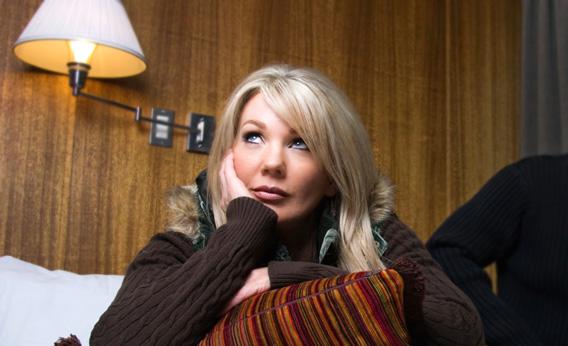Exasperation is pervading the political body language in Washington these days. Republican leaders reacted to Barack Obama’s press conference Monday with “a joint eye-roll,” according to the Washington Post. The unproductive debt negotiations between Obama and House Speaker John Boehner, as Politico notes, were marked by “lengthy Obama lectures and much eye-rolling.” When did rolling one’s eyes become a way to signal disapproval?
Just in the last few decades. In previous centuries, it often meant the opposite—a look of passion and lust. According to the Oxford English Dictionary, people have been “rolling their eyes” since at least the 15th century. In Shakespeare’s narrative poem The Rape of Lucrece, he describes the rapist Sextus Tarquinius as looking hungrily upon Lucrece’s bed and “rolling his greedy eyeballs in his head.” A passage in Milton’s Paradise Lost warns of tempting women who are made only for “the taste/ Of lustful appetence … to troll the tongue, and roll the eye.” In the 18th and 19th centuries, rolling one’s eyes could signal “delicious danger” along with flirtation and loving affection. But the meaning of the gesture was still diverse: Other times the rolling of the eyes was described as a sign of savage ferocity, such as in the wild eyes of a rampaging horse, and by the time of Uncle Tom’s Cabin you could roll your eyes even as you were being droll and deadpan.
Another citation from the OED suggests that by 1931 you could roll your eyes “lugubriously,” and in Their Eyes Were Watching God (1937) Joe rolls his eyes “indifferently.” While this begins to approach today’s meaning, the old interpretation persisted at least as late as 1950, when Hank Penny’s 1950 song “Bloodshot Eyes” told of a fallen woman who would “roll those big brown eyes” to seduce a former flame. And some other meanings persisted, too: In Maurice Sendak’s Where the Wild Things Are from 1963, the titular monsters “roll their terrible eyes.” (Another sort of eye roll, in which the eyes roll straight up and back into the head, is still used to signal a sort of orgasmic pleasure, such as after a good meal. It’s unclear if this looks anything like the eye rolls described by Shakespeare and Penny.)
But that same decade some people began rolling their eyes much like the politicians of today (and 30 Rock’s Liz Lemon). In Jim Thompson’s crime novel Pop. 1280 (1964), the narrator’s lover rolls her eyes at his excuses, saying “Oh, brother!” and “What a bull artist!” People seem to have really started rolling their eyes in the 1980s, and it was around that time that people began groaning about real eye-rollers. The New York Times language columnist William Safire traced the term to, coincidence or not, a previous discussion of budget deficits, prompted by Ronald Reagan’s defense spending.*
There is some evidence that eye-rolling isn’t just an affectation. In his 1989 book Human Ethology, founding human ethologist Irenaus Eibl-Eibesfeldt noted that many cultures have similar gestures for rejection, all involving looking away. “If we do not wish to see, we close our eyes and turn away,” he wrote. “We often move the head in an intention movement to the side or rear, and this reaction to unpleasant visual and olfactory stimuli is also used as a gesture of arrogance.” A type of eye-rolling has also been observed in confined animals, particularly veal calves, as a compulsive behavior and a sign of stress. However, biologists point out that the extraordinary amount of whiteness in the human eye, compared with that of other primates, gives humans a remarkable ability to communicate using only eye movements.
Got a question about today’s news? Ask the Explainer.
Explainer thanks Patrick A. Stewart of the University of Arkansas and Ben Zimmer of the Visual Thesaurus and Vocabulary.com.
*Correction, Jan. 15, 2013: This article originally misspelled the name of language columnist William Safire.
